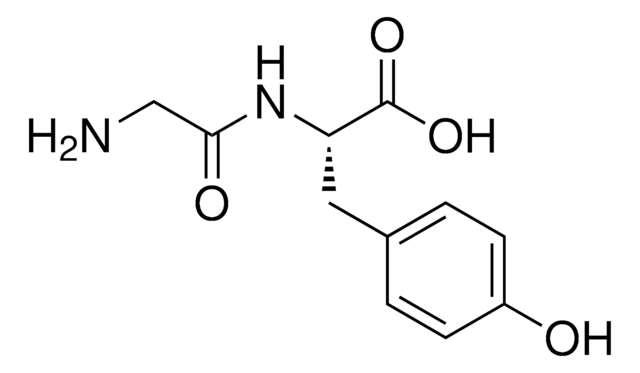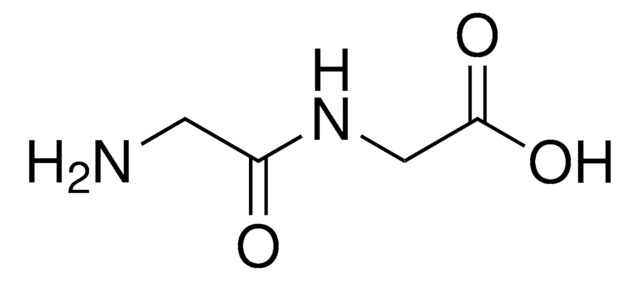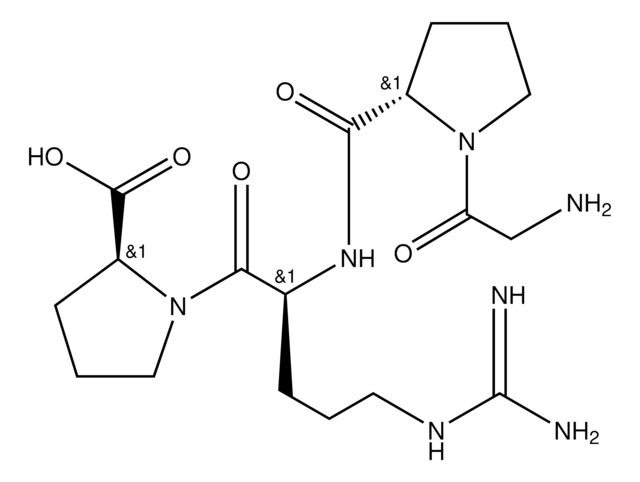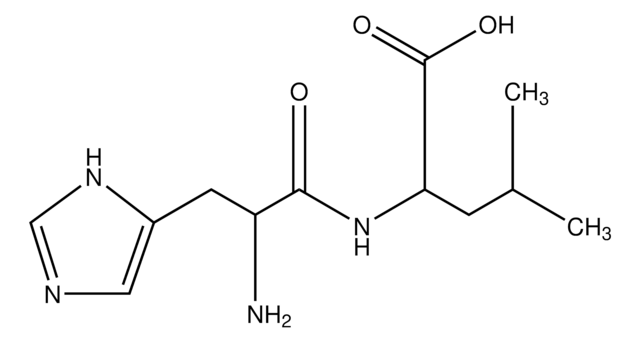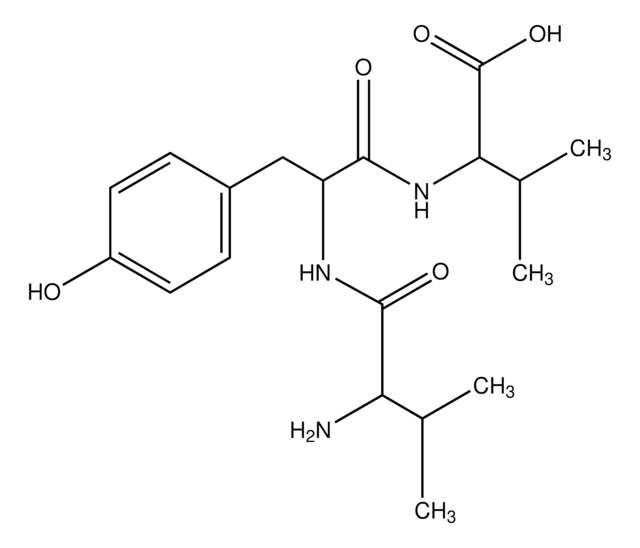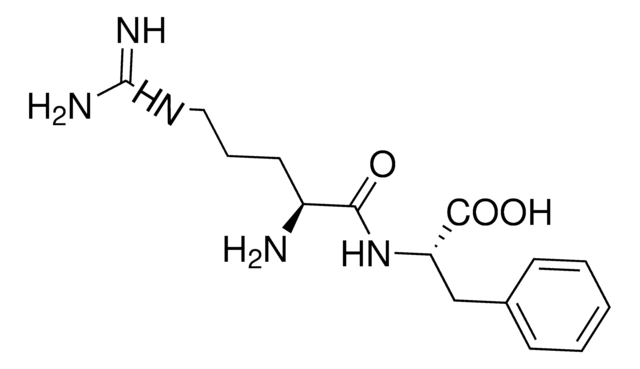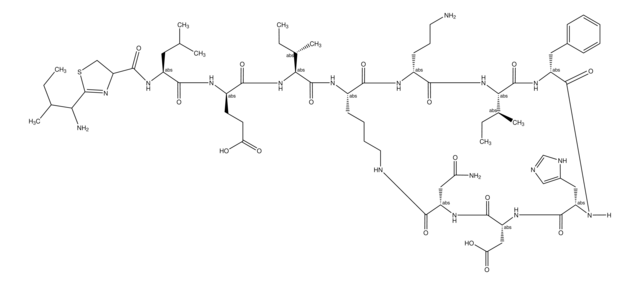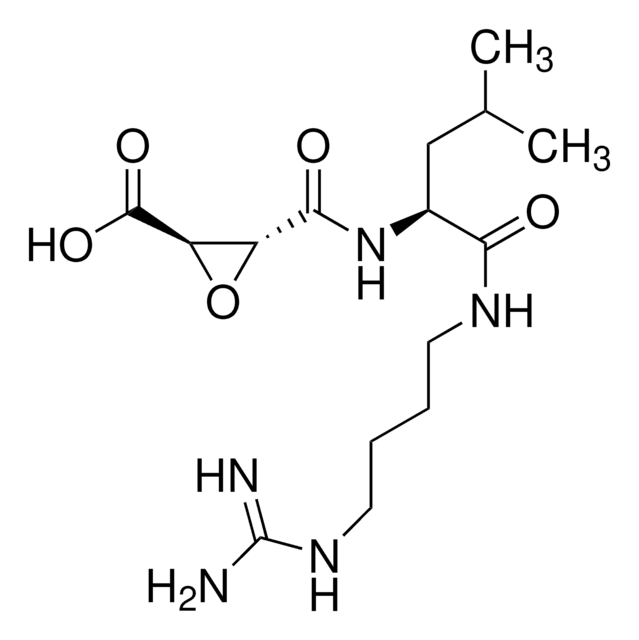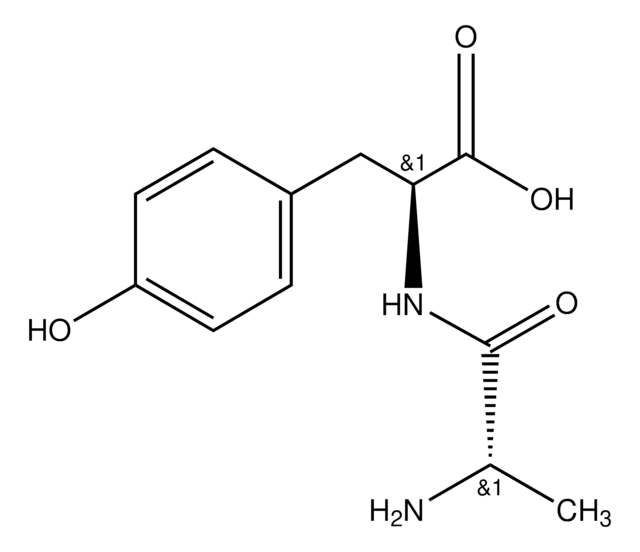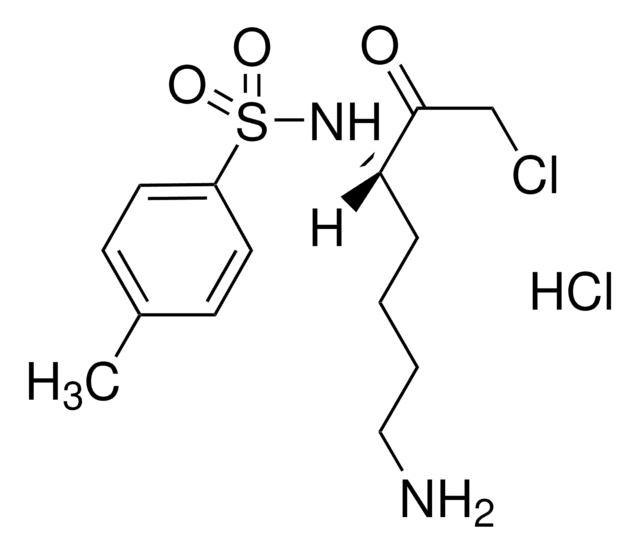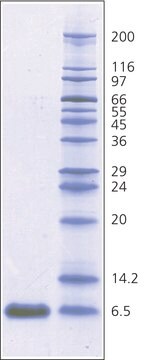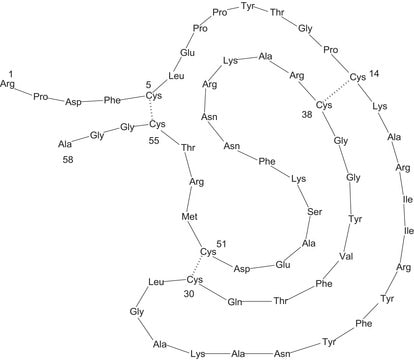G5386
Gly-Gly-Tyr-Arg
powder, ≥97% (HPLC)
Sinónimos:
GGYR, Glycyl-glycyl-tyrosyl-arginine
About This Item
Productos recomendados
product name
Gly-Gly-Tyr-Arg, ≥97% (HPLC)
origen biológico
synthetic (organic)
Nivel de calidad
Análisis
≥97% (HPLC)
formulario
powder
solubilidad
water: 2 mg/mL, clear, colorless
temp. de almacenamiento
−20°C
cadena SMILES
NCC(=O)NCC(=O)NC(Cc1ccc(O)cc1)C(=O)NC(CCCNC(N)=N)C(O)=O
InChI
1S/C19H29N7O6/c20-9-15(28)24-10-16(29)25-14(8-11-3-5-12(27)6-4-11)17(30)26-13(18(31)32)2-1-7-23-19(21)22/h3-6,13-14,27H,1-2,7-10,20H2,(H,24,28)(H,25,29)(H,26,30)(H,31,32)(H4,21,22,23)
Clave InChI
FJPHHBGPPJXISY-UHFFFAOYSA-N
Aplicación
- in the synthesis of the dimethoxyphosphotyrosine adduct to determine if diethoxyphosphate tyrosine (depY), a monoclonal antibody could distinguish between dimethoxyphosphotyrosine and diethoxyphosphotyrosine
- to graft on to a soft polyacrylamide for sodium dodecyl sulfate–polyacrylamide gel electrophoresis (SDS-PAGE) to perform high-resolution separation of peptides
- as a model peptide to react with 3,3-dithiobis(sulfosuccinimidyl propionate) (DTSSP) to understand the chemistry of DTSSP and similar cross-linking reagents
Código de clase de almacenamiento
11 - Combustible Solids
Clase de riesgo para el agua (WGK)
WGK 3
Punto de inflamabilidad (°F)
Not applicable
Punto de inflamabilidad (°C)
Not applicable
Equipo de protección personal
Eyeshields, Gloves, type N95 (US)
Certificados de análisis (COA)
Busque Certificados de análisis (COA) introduciendo el número de lote del producto. Los números de lote se encuentran en la etiqueta del producto después de las palabras «Lot» o «Batch»
¿Ya tiene este producto?
Encuentre la documentación para los productos que ha comprado recientemente en la Biblioteca de documentos.
Los clientes también vieron
Artículos
Papain is a cysteine protease of the peptidase C1 family. Papain consists of a single polypeptide chain with three disulfide bridges and a sulfhydryl group necessary for activity of the enzyme.
Nuestro equipo de científicos tiene experiencia en todas las áreas de investigación: Ciencias de la vida, Ciencia de los materiales, Síntesis química, Cromatografía, Analítica y muchas otras.
Póngase en contacto con el Servicio técnico
